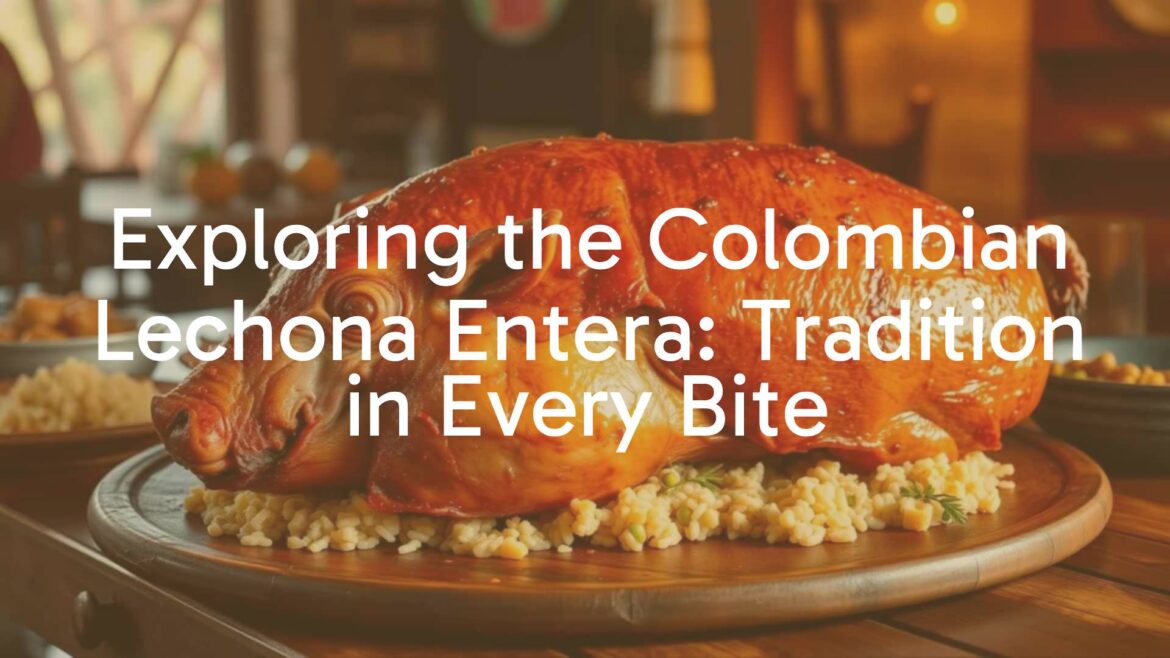Lechona Entera: Colombia’s Celebratory Roast
Origins and Historical Context
Lechona entera stands as one of Colombia’s most grandiose and iconic festive dishes. Its origins date back to colonial times in the central region of Tolima, where the blending of Spanish roasting traditions and local ingredients birthed this revered culinary centerpiece. Over generations, the dish evolved to become a highlight at major celebrations, symbolizing abundance and communal joy.
What Distinguishes Lechona Entera?
Lechona entera is a whole roast pig, meticulously stuffed with a savory mixture of rice, peas, pork, and aromatics. Unlike simpler roasts, lechona is renowned for its intricate preparation and harmonious melding of textures — featuring crisp skin, tender meat, and a flavorful interior. The pig is first seasoned, then filled with the stuffing, and slow-roasted until the exterior achieves a golden, glass-like crunch while the interior remains moist and aromatic.
Key Ingredients and Preparation Approach
The hallmark ingredients include an entire young pig (often deboned), rice, tender peas (usually yellow or green), onions, fresh herbs like cilantro or bay leaf, spices including cumin and pepper, and sometimes additional pork cuts for added flavor. Preparation is labor-intensive, requiring hours of careful roasting (sometimes over twelve hours) to perfect the contrasting textures. The process is typically overseen by experienced cooks, often involving community participation or professional lechoneros.
Regional Traditions and Variations
While lechona originated in Tolima, it has become a national favorite, especially in the departments of Huila and Cundinamarca. In Huila, additional herbs and a slightly different rice blend may be used, and local variations may include potatoes or chickpeas in the stuffing. Some versions even adapt the seasoning to reflect local palates, giving each region’s lechona distinct nuances in taste and texture.
Cultural Role and Serving Customs
Lechona entera plays a pivotal role in Colombian festivities such as fiestas patronales, weddings, and New Year’s celebrations. It is more than a dish — it is a social event, often served buffet-style from the roasted pig itself, allowing guests to share in the spectacle. Traditionally, lechona is accompanied by arepas or insulso (a sweet corn pudding), and often enjoyed with chilled drinks or fruit juices.
Frequently Asked Questions and Serving Tips
Is lechona always made with a whole pig? Yes, lechona entera specifically refers to preparations using the entire pig; smaller or partial versions exist but are considered variations.
How is lechona kept moist during long roasting? Traditional techniques involve basting with the pig’s own juices and ensuring the rice-and-pork stuffing maintains enough moisture for the entire process.
Can lechona be made for smaller gatherings? While lechona entera is synonymous with large-scale events, home versions sometimes use only pork shoulder or belly for smaller groups.
Enduring Symbolism
Colombian lechona entera is more than a lavish meal; it encapsulates the spirit of Colombian hospitality, emphasizing sharing, craftsmanship, and celebration. Its time-honored preparation and communal enjoyment make it a lasting icon of national gastronomy, consistently drawing people together around its aromatic, golden-roasted centerpiece.


